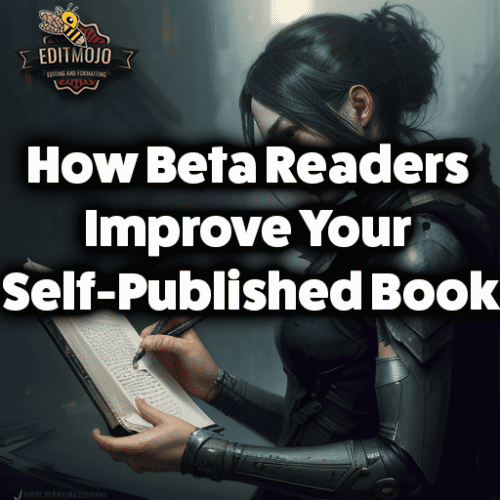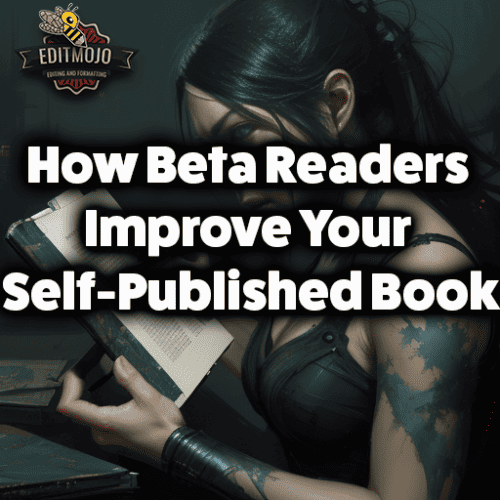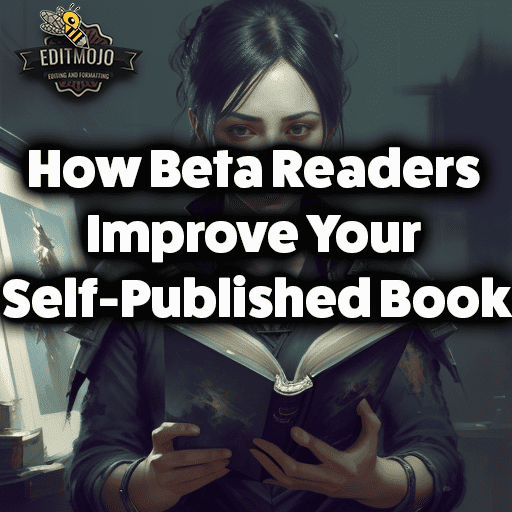How Beta Readers Improve Your Self-Published Book
How Beta Readers Improve Your Self-Published Book. Self-publishing has revolutionized the publishing world, liberating authors from traditional gatekeepers and opening up a vista of opportunities. However, the freedom of self-publishing comes with a caveat: the responsibility to ensure quality lies entirely with the author. Enter, the unsung heroes of the self-publishing realm: beta readers. These are the individuals who, armed with nothing more than their love for reading, provide invaluable feedback to authors before their work hits the market. Let’s delve into the world of beta reading, its impact, and its relevance in the self-publishing process.
Key Takeaways Table
| Key Takeaways | Details |
|---|---|
| Role of Beta Readers | Beta readers provide feedback on your manuscript before it’s self-published. Their role is to give a reader’s perspective, not to proofread or edit. |
| Value of Beta Readers | Beta readers can help enhance clarity, identify plot holes, improve character development, assess pacing and gauge reader engagement. |
| Finding Beta Readers | Your target audience should be your first choice for beta readers. Online communities and platforms can also be helpful in finding beta readers. |
| Processing Feedback | Organize and evaluate the feedback from beta readers. Aim to strike a balance between your creative vision and the feedback you receive. |
| Overcoming Challenges | Dealing with conflicting feedback, managing timeframes, and handling criticism can be mitigated by setting clear expectations and maintaining authorial integrity. |
| Beta Reading Beyond Text | Beta readers can also provide feedback on book cover design, title, author bio, and overall reader experience. |
| Future of Beta Reading | Online communities are growing, offering new platforms and tools for beta reading. AI and machine learning are also playing a role in the evolution of beta reading. |
Understanding the Role of Beta Readers
Before we dive into the meat of the matter, let’s clarify what exactly we mean when we talk about beta readers. In the software industry, a “beta tester” is someone who tests a product in its final stages of development, under real-world conditions, before it’s officially released. Likewise, in the literary world, a beta reader reads an author’s manuscript, typically after it’s been through several revisions, but before it’s sent to an editor or self-published. They’re not editors or proofreaders, though they may catch typos or grammar issues. Their primary role is to provide feedback from a reader’s perspective.

The Value of Beta Readers in the Self-Publishing Process
Here’s where things get interesting. The beta reader, as a member of your target audience, provides an invaluable perspective on your work. They can:
1. Enhance clarity and readability: By identifying passages that are unclear, too technical, or verbose, beta readers help make the story more understandable for the general audience.
2. Identify plot holes and inconsistencies: Continuity errors, character anomalies, or unresolved plot threads are more easily spotted by fresh eyes.
3. Improve character development: Beta readers can provide feedback on character believability, development, and relatability.
4. Assess pacing and flow of the story: They can highlight sections that felt too rushed, too slow, or disjointed.
5. Gauge reader engagement and emotional resonance: Beta readers provide firsthand feedback on which parts of the story were compelling, moving, boring, or confusing.
To illustrate, consider the success of Andy Weir’s self-published phenomenon, “The Martian”. Weir initially published the chapters on his blog where fans could read and give feedback. This collaboration with early readers helped refine the story, making it a sensation even before it was formally published [source].
How to Find and Choose Your Beta Readers
Finding the right beta readers is as important as the writing process itself. Your target audience is a great starting point; after all, they’re the ones you’re writing for. They’ll be best equipped to provide feedback that aligns with your reader demographic.
Professional beta readers can also provide feedback, often with a more systematic approach. However, their services usually come at a price. Casual beta readers, on the other hand, could be fellow writers, friends, or members of online communities. Platforms like Goodreads or Reddit have specific sections dedicated to connecting authors with potential beta readers.
Remember to provide clear guidelines about what kind of feedback you’re looking for, and what your timeline is. The more explicit you are with your needs and expectations, the more useful their feedback will be.

Processing Beta Reader Feedback
Once you’ve received feedback, the task of sorting and implementing it begins. It’s important to approach this with an open
mind. Not all feedback will be easy to digest, but remember, the goal is to improve your book. Here are some steps to follow:
1. Receiving and organizing feedback: Gather all feedback and categorize it based on the aspects they refer to: plot, characters, pacing, etc.
2. Deciding which feedback to incorporate: This can be challenging. Ultimately, you have to strike a balance between your creative vision and reader feedback.
3. Balancing your creative vision with reader feedback: Remember, your book is your creation. You don’t have to make every change suggested, but if multiple beta readers point out the same issue, it’s worth taking a serious look at it.
A great example of processing feedback is J.K. Rowling, who frequently showed drafts to her close circle and incorporated their suggestions, greatly improving the final versions of her “Harry Potter” books.
Common Challenges in Using Beta Readers and How to Overcome Them
There are some potential pitfalls when using beta readers, but they can be mitigated with some forethought:
1. Dealing with conflicting feedback: Different people have different opinions. When faced with conflicting feedback, consider your target audience and your creative vision to make a decision.
2. Managing timeframes and deadlines: Clearly communicate your timeline expectations to your beta readers. Consider giving them a deadline a little ahead of when you actually need the feedback.
3. Handling negative feedback or criticism: Remember, feedback is meant to improve your book. Constructive criticism is a gift, albeit sometimes a tough one to accept.
4. Maintaining authorial integrity while addressing feedback: Keep your voice and your vision intact. Feedback should refine your work, not change its essence.

Going Beyond the Text: Other Aspects Beta Readers Can Improve
Apart from the story itself, beta readers can also provide feedback on the book cover design, book blurb, author bio, and title. This can be especially helpful in attracting potential readers.
Moreover, beta readers can assess the overall reader experience. They can indicate whether the book was a page-turner, if it was emotionally resonant, and whether it met their expectations based on the blurb and genre.
The Future of Beta Reading: Emerging Trends and Tools
Just like other aspects of publishing, beta reading is also evolving. Online communities are growing, providing larger and more diverse pools of potential beta readers. Platforms like BetaBooks and BookFunnel offer streamlined ways to manage beta reading.
Furthermore, AI and machine learning tools are being developed to automate parts of the beta reading process. For instance, tools might be able to predict reader engagement or identify overused phrases.
Conclusion (How Beta Readers Improve Your Self-Published Book)
While the prospect of writing and self-publishing a book may seem daunting, remember that you don’t have to do it all alone. Beta readers can provide a wealth of insight, guidance, and improvement to your work, making it the best version it can be. They are an integral part of the self-publishing process and should be a well-considered part of your publishing journey.
So, writers, embrace the feedback, grow from it, and let it guide you to your masterpiece. The path may be riddled with criticism and self-doubt, but as the revered author Stephen King said, “Writing is a lonely job. Having someone who believes in you makes a lot of difference.”
Call to Action (How Beta Readers Improve Your Self-Published Book)
Do you have any experience with beta readers, either as an author or a reader? I’d love to hear about it in the comments below. If you have any further questions or thoughts, let’s have a discussion!
Top Five Questions and Answers
| Questions | Answers |
|---|---|
| What is a beta reader? | A beta reader is someone who reads an author’s manuscript in its final stages and provides feedback from a reader’s perspective. |
| How can a beta reader improve my self-published book? | They can enhance clarity, identify plot holes and inconsistencies, help with character development, assess pacing, and gauge reader engagement. |
| Where can I find beta readers? | Your target audience, online communities like Goodreads and Reddit, and platforms dedicated to connecting authors with beta readers are all good sources. |
| How should I handle feedback from beta readers? | Organize the feedback, assess its validity in light of your creative vision, and decide which suggestions to implement. |
| Can beta readers help with aspects other than the text? | Yes, they can provide feedback on your book cover design, title, author bio, and overall reader experience. |
Top Seven Resources and Further Reading
